Occupational safety training for industrial kitchen
99,000 ₫
Note: The above price is calculated per person, prices may fluctuate depending on the number of participants in the course and market movements. For more accurate price support, please refer to the price list or contact our consulting staff directly.
The Industrial Kitchen Safety Training course is a course that provides knowledge of Group 3 occupational safety. The course will raise awareness of how to prevent workplace accidents for participants. Accordingly, the occupational safety training content is closely aligned with Article 18 of Decree 44/2016/ND-CP.
Table of Contents
Toggle1. Overview of the Industrial Food Processing Sector
a. What is an industrial kitchen?
An industrial kitchen (also known as a commercial kitchen) is a type of kitchen designed and used in industrial environments or large-scale food service operations. It is used to cook and prepare daily meals for a large number of people, such as in restaurants, hotels, industrial canteens, hospitals, schools, factories, customs offices, and other organizations and agencies.
Industrial kitchens are equipped with specialized structures and equipment to meet the daily culinary production needs on a large scale and with high efficiency. They typically include components such as cooking ranges, ovens, steamers, fryers, grills, boiling stations, stir-fry stations, dishwashers, work tables, large refrigerators, and other necessary equipment for cooking and food processing.
Industrial kitchens must comply with food safety, hygiene, and environmental protection regulations. They are usually strictly monitored and controlled to ensure the safety and quality of food prepared on a large scale.

b. Types of machinery in industrial kitchens
In industrial kitchens, various types of machinery are used to increase efficiency and meet large-scale food processing needs. Some common machinery includes:
- Water boilers: Industrial water boilers are used to boil water and maintain the necessary water temperature for cooking, steaming, baking, and other food processing tasks.
- Industrial ovens: Large and high-capacity ovens are used to bake and roast foods such as bread, pastries, pizza, meat, fish, and vegetables.
- Grinders, mixers, and juicers: Machines such as meat grinders, dough mixers, fruit juicers, and spice grinders are used to process and prepare various food ingredients.
- Steamers: Industrial steamers use steam to cook and steam food. This method is commonly used in restaurants and commercial kitchens.
- Dishwashers: Industrial dishwashers efficiently clean and sanitize dishes, glasses, and cooking utensils.
- Ice cream machines: Industrial ice cream machines are used to produce ice cream on a large scale for restaurants, hotels, and other food service facilities.
- Packaging and canning machines: Automated packaging and canning machines help package and can food products such as candies, instant noodles, canned food, and other packaged items.

c. Notable industrial kitchens in Vietnam
In Vietnam, several industrial kitchens are well-known and recognized in the culinary industry. Examples include:
- Industrial kitchens of large restaurants and hotels: Large-scale establishments like Sofitel Legend Metropole Hanoi, InterContinental Saigon, and Sheraton Saigon Hotel & Towers have professional industrial kitchens to serve diverse culinary needs and a large number of guests.
- Industrial kitchens of food corporations and factories: Food corporations such as Vissan, CJ, Masan, or food processing factories like Kinh Đô, Vifon, Acecook, Tan Hiep Phat also operate large-scale industrial kitchens for daily food production.
- Industrial kitchens of distribution centers and food service facilities: Retail distribution centers like Big C, Lotte Mart, and VinMart have industrial kitchens to serve fast food, lunch, and dinner for staff and customers.
- Industrial kitchens of organizations, agencies, and schools: Institutions like Ho Chi Minh City University of Education, Bach Mai Hospital, and Military Region 7 Command operate industrial kitchens to meet daily culinary needs for staff, employees, and students.

d. Specific jobs in industrial kitchens
Industrial kitchens have various positions to handle daily food preparation. Common roles include:
- Head Chef: Responsible for deciding dishes, menus, and preparation processes. They plan, supervise, and coordinate kitchen operations.
- Sous Chef: Assists the head chef in managing the kitchen and supervising daily preparation tasks. May oversee specific sections like baking, steaming, or plating.
- Line Cooks: Execute cooking and preparation tasks according to the head chef’s instructions. May handle meat roasting, vegetable stir-frying, frying, or other dish components.
- Prep Cooks: Prepare and pre-process ingredients like vegetables, meat, fish, spices, and other materials. Tasks include peeling, cutting, washing, and portioning ingredients.
- Kitchen Steward: Maintains cleanliness and hygiene in the kitchen, washes dishes, and ensures general sanitation of the workspace.
- Pastry Chef: Prepares desserts, pastries, and baked goods. Requires specialized knowledge in baking, decorating, and dough preparation.
- Kitchen Manager: Organizes, plans, and oversees kitchen operations, ensures compliance with food safety regulations, and manages kitchen staff.
e. Common dishes prepared in industrial kitchens
Industrial kitchens prepare a variety of dishes to meet customer or employee needs. Popular dishes include:
- Main dishes:
- Roasted, braised, stewed, stir-fried meats: Pork, chicken, beef, or poultry prepared using roasting, braising, stewing, or stir-frying methods.
- Fried, steamed, or braised fish: Prepared using frying, steaming, or braising methods.
- Soups:
- Sour soups: Sour fish or meat soups with vegetables and sour fruits like tomatoes, tamarind, or mango.
- Sweet soups: Minced meat soups, clam soups, vegetable soups.
- Stir-fried dishes:
- Vegetables: Stir-fried morning glory with garlic, spinach, broccoli, etc.
- Meat: Stir-fried pork with cabbage, chicken with ginger and onion, etc.
- Grilled dishes:
- Bread: Garlic butter bread, grilled cheese bread.
- Meat: Grilled beef, pork, chicken.
- Fish: Basa with scallion oil, grilled mackerel with ginger sauce.
- Desserts:
- Pastries: Flan, tarts, puddings.
- Sweets: Mung bean sweet soup, lotus seed sweet soup, grapefruit sweet soup.
- Fresh fruits: Honey-glazed roasted sweet potatoes, mango salad, watermelon.
2. Overview of occupational safety training for industrial kitchens
a. What is occupational safety training for industrial kitchens?
- Occupational safety training for industrial kitchens consists of sessions that raise awareness and provide guidance on preventing workplace accidents for employees. Workers directly involved in kitchen operations belong to Group 3.
- The training helps employees identify and prevent hazards, reducing the risk of workplace accidents.
REGISTER FOR OCCUPATIONAL SAFETY TRAINING
b. Training duration
Initial occupational safety training:
- Total training duration is at least 24 hours, including examination time.
- 8 hours theory on labor safety policies and laws.
- 8 hours theory on basic occupational safety and hygiene knowledge.
- 4 hours theory on specialized training content.
- 2 hours practical training on specialized content.
- 2 hours theoretical assessment at the end of the course.
The training center may schedule multiple sessions depending on employees’ availability. Typically, the course consists of 6 sessions over 3 days if continuous attendance is feasible.
Periodic occupational safety training:
- Before the occupational safety card expires, workers must complete a periodic occupational safety training course, with a duration of at least 50% of the initial training duration.
Explanation: Total periodic training time is at least 12 hours, including examination. After completing the course and passing the test, employees will receive a renewed occupational safety card.
c. Training content
| No. | TRAINING CONTENT | TRAINING DURATION (HOURS) | |||
| Total | Including | ||||
| Theory | Practical | Examination | |||
| I | Occupational safety policies and legal framework | 8 | 8 | 0 | 0 |
| 1 | Overview of the legal documents system on occupational safety and hygiene. | 6 | 6 | ||
| 2 | System of safety standards and technical regulations. | 1 | 1 | ||
| 3 | Specific regulations of state management agencies regarding safety and hygiene when constructing, expanding, or renovating facilities, and managing equipment and materials with strict safety requirements. | 1 | 1 | ||
| II | Basic occupational safety and hygiene knowledge | 8 | 8 | 0 | 0 |
| 1 | Basic knowledge of hazards and harmful factors at the workplace. | 4 | 4 | ||
| 2 | Methods to improve working conditions. | 1 | 1 | ||
| 3 | Safety culture in production and business. | 1 | 1 | ||
| 4 | Rights and obligations of employers and employees; safety policies and roles of safety officers. | 1 | 1 | ||
| 5 | Safety and hygiene regulations, signage, use of safety equipment and personal protective equipment, first aid skills, and occupational disease prevention. | 1 | 1 | ||
| III | Specialized training content | 6 | 4 | 2 | 0 |
| Comprehensive knowledge of machinery, equipment, hazardous substances; risk assessment and management; safe working procedures with machinery and substances requiring strict safety compliance. | 6 | 4 | 2 | ||
| IV | Final occupational safety assessment | 2 | 2 | 0 | 0 |
| Total | 24 | 22 | 2 | ||
See more training content for all 6 groups
d. Occupational safety card
After completing the occupational safety training and passing the exam, employees are issued an occupational safety card (commonly called Group 3 safety certificate).
Group 3 cards display information such as full name, date of birth, job, and specific work environment, along with training duration, official stamp, and signature confirming completion of the course.
According to regulations in Clause 2 of Article 24 of Decree 44/2016/ND-CP, there are two cases:
- If the employee has a labor contract with the employer, the employer must sign and stamp the safety card after the employee completes training and passes the exam.
- If the worker is freelance or temporary, without a labor contract, the training unit must sign and stamp the safety card after the employee completes training and passes the exam.

3. Identifying Hazards for Workers in Industrial Kitchens
In industrial kitchens, there are several potential hazards for workers. Below are some common hazards in this working environment:
- Fire and explosion risk: Using heat sources such as ovens, gas stoves, and electric stoves can create fire and explosion hazards. Flammable substances like cooking oil, gasoline, gas, and other liquids can also pose dangers if not stored and used properly.
- Burn risk: Working in high-temperature environments and using heat equipment such as ovens and steamers can cause burns and skin injuries for workers.
- Workplace accident risk: Knives, scissors, cutting tools, grinders, ovens, and other equipment can cause accidents if not used correctly or if safety rules are not followed.
- Slip and fall risk: Wet floors, spilled oil, materials on the floor, and improperly placed equipment can lead to slips, falls, and injuries for workers.
- Chemical hazard: Using cleaning agents, preservatives, and other chemicals during food preparation can be dangerous if not used properly or if ventilation and safety procedures are inadequate.
- Food hygiene risk: Improper food handling and failure to follow hygiene rules can lead to bacterial contamination, food poisoning, and other health issues.
- Temperature-related risk: In industrial kitchens, extremely high or low temperatures can harm workers. Working in excessively hot environments may lead to heat stress, fatigue, and other health problems.

4. Safety Measures for Workers in Industrial Kitchens
- Ensure personal hygiene rules:
- Wear personal protective equipment, including helmets, masks, gloves, fire-resistant coats, and safety shoes.
- Wash hands regularly with soap and clean water or use antibacterial hand sanitizer.
- Keep hair tidy and avoid long hair falling into food or equipment.
- Use safety equipment:
- Regularly inspect, maintain, and repair kitchen equipment and machinery.
- Use personal protective equipment such as gloves for cutting, polishing brushes, etc.
- Ensure electrical safety and fire prevention by using standard sockets, checking wiring, and fuel supply systems.
- Chemical management:
- Store and use chemicals according to manufacturer instructions.
- Ensure proper ventilation in the kitchen to avoid inhalation hazards and enhance safety when using chemicals.
- Training and supervision:
- Train staff on safe work procedures, correct use of equipment and tools, and recognizing potential hazards in the kitchen.
- Periodically inspect and supervise workers’ activities to ensure compliance with safety rules and work procedures.
- Food hygiene management:
- Ensure proper storage, handling, and preparation of food to prevent bacterial contamination and food poisoning.
- Follow food hygiene rules such as cleanliness, separating raw materials, maintaining appropriate storage temperatures, and proper food processing procedures.
- Risk management:
- Identify and assess potential risks in the kitchen and implement preventive measures, such as creating safe zones, limiting exposure to hazards, and preparing for emergencies.
- Periodically conduct occupational environment monitoring in factories, collecting and analyzing harmful factors for workers, and adjusting to reduce hazards to prevent occupational diseases.
5. Types of Accidents in Industrial Kitchens
- Fire and explosion: These can occur due to fuel system malfunctions, cooking equipment issues, electrical problems, or unsafe use of flammable liquids and oils.
- Cuts: Accidents happen when using sharp tools such as knives, scissors, cutters, without following safety rules during cutting, chopping, and food preparation.
- Slips and falls: Wet floors, oil spills, or materials on the floor can cause slips, falls, and injuries for workers.
- Burns and heat injuries: High heat from ovens, stoves, and steamers can cause burns and skin injuries.
- Splash burns: Hot materials like oil, boiling water, or food may splash during cooking, causing burns in the mouth area.
- Food poisoning: Using non-fresh food, improper storage, or incorrect preparation can lead to food poisoning.
- Minor cuts and injuries: Small accidents such as hand cuts, being hit by heavy equipment, or collisions with kitchen tools can occur if safety rules are not followed.
6. Benefits of Occupational Safety Training for Industrial Kitchens
An Toan Nam Viet provides businesses with the following benefits after completing occupational safety training courses in accordance with Decree 44/2016/NĐ – CP on occupational health and safety:
- Workers can identify potential accident hazards and take preventive measures.
- Enterprises can establish risk prevention measures in production, operation, and maintenance processes.
- Minimize costs associated with workplace safety hazards.
- Continuous production without interruptions improves labor productivity and product quality.
- Comply with occupational safety laws, avoiding legal risks.
- Enhance reputation and professionalism, thereby elevating the company’s brand.
REGISTER FOR OCCUPATIONAL SAFETY TRAINING
7. Customer Feedback after Completing Training
An Toan Nam Viet has many years of experience accompanying enterprises across Vietnam, particularly in the southern provinces. Positive feedback and suggestions from our partners drive our professional training development. Below are some testimonials:
BAC NAM E&C INVESTMENT JOINT STOCK COMPANY
HOA DAT CONSTRUCTION AND TRADING JOINT STOCK COMPANY
See more customer interviews after using our services at An Toan Nam Viet
8. An Toan Nam Viet’s Occupational Safety Training Capability
An Toan Nam Viet is a reputable and quality occupational safety training center in Vietnam. Training courses are conducted nationwide at factories, production workshops, or construction sites (63 provinces).
REGISTER FOR OCCUPATIONAL SAFETY TRAINING
- An Toan Nam Viet has been inspected and certified by the Department of Safety under the Ministry of Labor – Invalids and Social Affairs, granting certification to operate occupational safety and hygiene training.

- Training materials are reviewed and validated to ensure accurate knowledge and effective application.
- Instructors’ methods follow An Toan Nam Viet guidelines, based on expertise in occupational health and safety training.
- Classrooms and facilities meet standards for area, lighting, and equipment to maximize learning efficiency.
9. Nationwide Reputable Safety Training Center
At An Toan Nam Viet, professional occupational safety training is our top priority. Our instructors are experts with years of experience and practical research in identifying hazards across industries. Training is engaging, practical, and aligned with Decree 44/2016/NĐ-CP, ensuring workers learn preventive measures and how to protect themselves effectively.
- Competitive training costs with guaranteed quality.
- Flexible scheduling according to company production needs.
- Fast certification procedures in compliance with the law.
- Experienced instructors.
- Controlled classrooms to enhance learning efficiency.
- Training content tailored to enterprise occupational safety.
- Dedicated and professional support for customers.

10. Additional References for Industrial Kitchen Safety Training
- Occupational Safety Training Materials for Industrial Kitchen Work
- Occupational Safety Training Materials Set
- Occupational Safety Training Tests
11. Occupational Safety Training Activities for Industrial Kitchens
- HONG VAN HOTEL JOINT STOCK COMPANY
- VIGLACERA VAN HAI JOINT STOCK COMPANY
- THE STREET JOINT STOCK COMPANY
- PHUONG TRIEU DAI RUBBER PROCESSING LIMITED COMPANY
- HOANG VIET EDUCATION DEVELOPMENT INVESTMENT JOINT STOCK COMPANY – Branch
- HA GIANG BRANCH – VINPEARL JOINT STOCK COMPANY (FOUR POINTS BY SHERATON HOTEL)
- TAM DUC CAM PHA JOINT STOCK COMPANY (Quang Ninh Project)
- TAM DUC CAM PHA JOINT STOCK COMPANY (Hanoi Project)
- CJ CATERING VIETNAM SERVICE LIMITED COMPANY
- ASANKA TRADING AND SERVICE MANUFACTURING LIMITED COMPANY
1 review for Occupational safety training for industrial kitchen
No comments yet

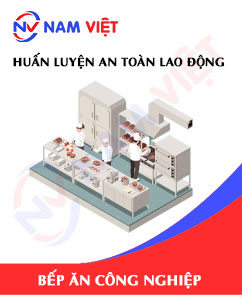
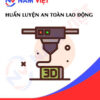
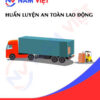



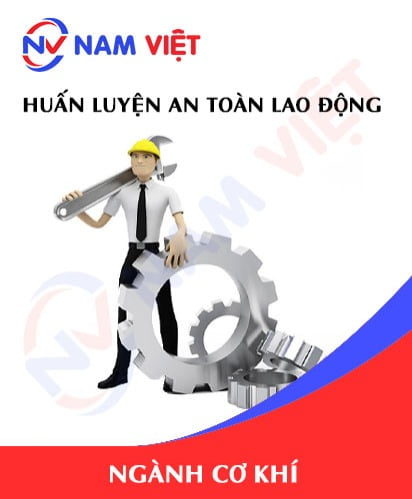

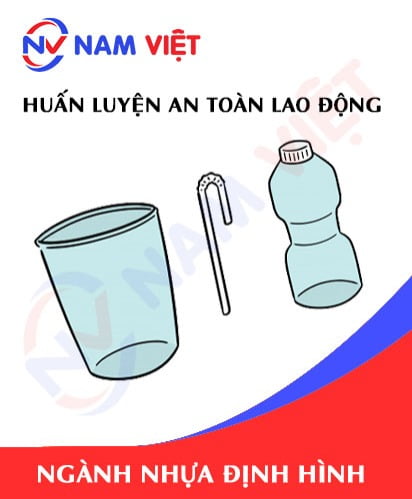
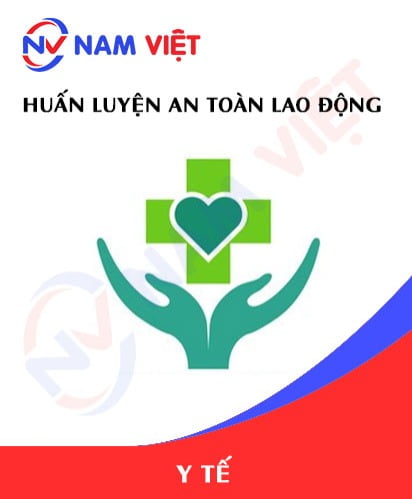
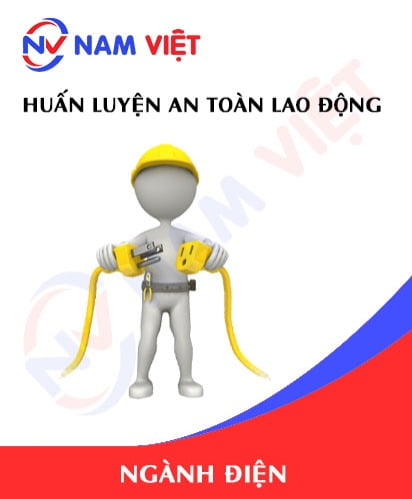
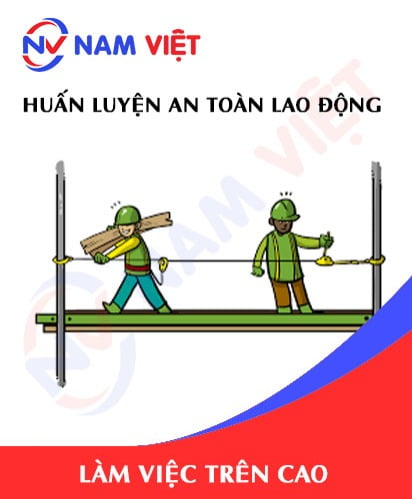


caotiensyhung.07081999
Dịch vụ huấn luyện an toàn lao động rất tốt nhé!